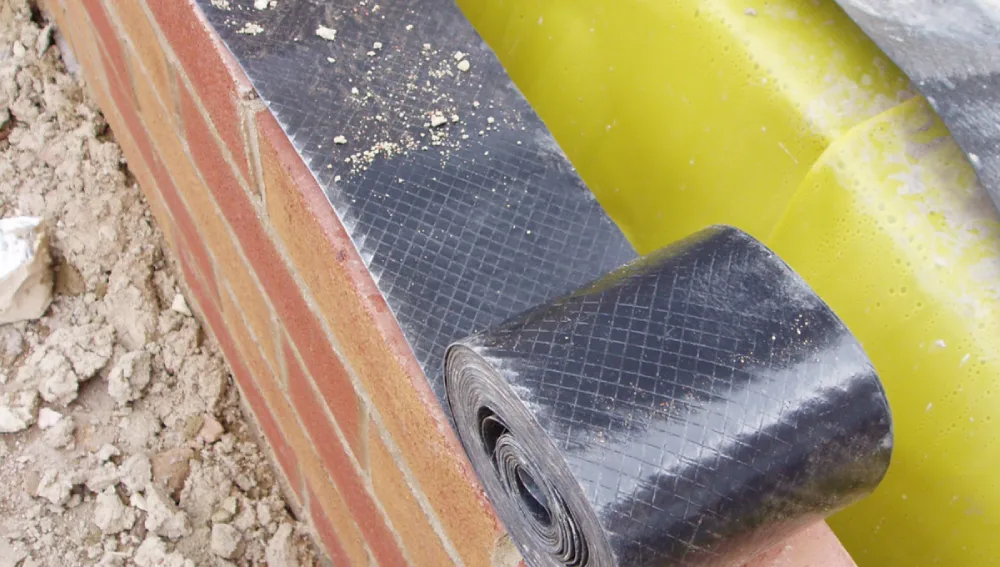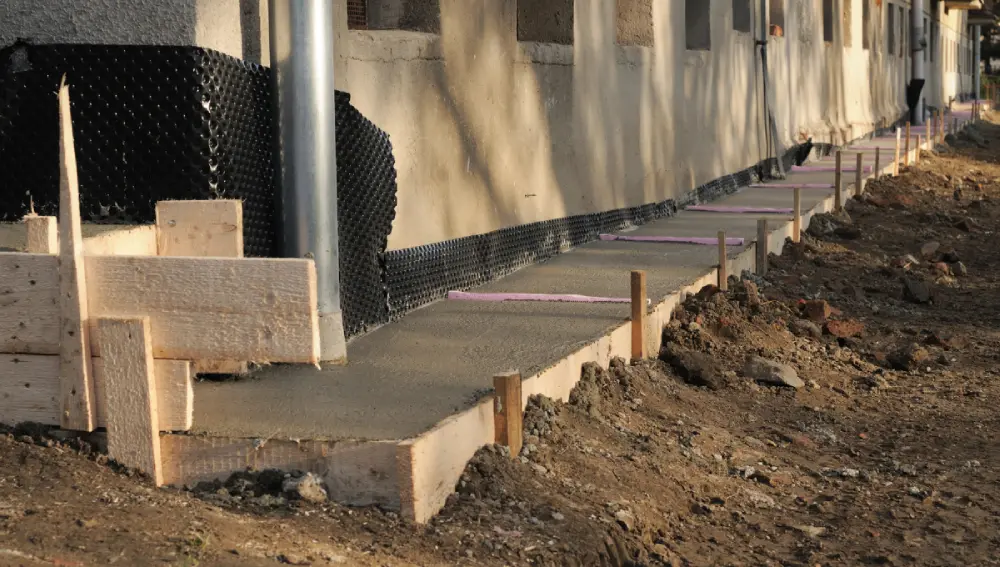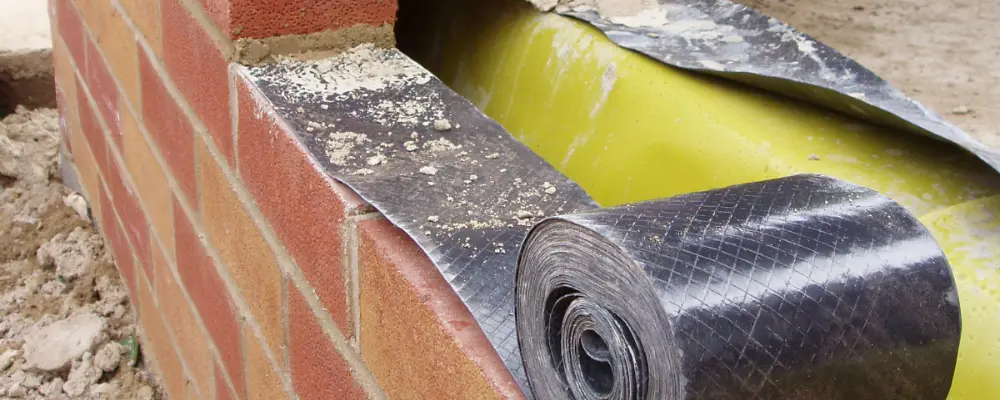In construction, moisture control is crucial for building integrity. A Damp Proof Course (DPC) is a key protective measure that prevents moisture from rising through walls and foundations. It protects structures from damage, mold, and decay. With many materials and methods available, builders, architects, and homeowners must understand DPC.
This article covers DPC, discussing its importance, benefits, and types of materials. It also reviews installation methods and key considerations. The goal is to ensure durability and safety in construction.
What is DPC in Construction?

DPC, or Damp Proof Course, is vital in building construction. It prevents moisture from rising through the walls and foundations. This moisture can cause problems. These include structural damage, mold, and rotting materials. The DPC is usually installed at the foundation level. It acts as a barrier against dampness that could harm the building.
The course can be made from various materials. It depends on the project’s requirements and the environment. DPC is a key moisture control method that is both simple and effective. So, builders and architects must consider it in their designs.
Why is DPC Construction Important?
One cannot overstate the significance of DPC construction, as it serves several crucial functions in the building process:
Moisture Prevention:
DPC’s main role is to stop moisture from rising in building materials. It does this by blocking capillary action. Without an effective DPC, moisture can cause damp walls, peeling paint, and mold.
Structural Integrity:
Moisture can damage a building by causing the wood to rot, the steel to rust, and the walls to fall. Adding a damp-proof course (DPC) makes a building stronger and longer-lasting.
Health and Safety:
Excess moisture can create an unhealthy home. It can promote mold and mildew growth. These conditions can cause respiratory issues and other health problems. DPC minimises these risks, contributing to a healthier indoor atmosphere.
Cost Efficiency:
A dampproof course (DPC) can cut future repair costs. Water damage is expensive and difficult to fix. So, installing a DPC is a cost-effective way to avoid it.
Benefits of Using DPC in New Construction

Incorporating DPC into new construction projects offers many advantages:
1. Improved Durability:
DPC prevents moisture from entering the building. This greatly extends the life of construction materials, especially timber and plaster.
2. Increased Property Value:
Buildings that are safeguarded against water typically have higher market values. Homebuyers prefer properties with fewer moisture issues. So, DPC is a strong selling point.
3. Safeguarding Beauty:
DPC prevents water damage, helping maintain a building’s appearance by preventing stains and warping, thus preserving its visual appeal and structural integrity.
4. Compliance with Regulations:
Building codes make DPC installation mandatory, aligning construction with safety norms. Beyond legal compliance, Damp Proofing mandate creates healthier homes. DPC-integrating builders protect residents and avoid lawsuits. They meet both ethical and regulatory duties.
5. Energy Efficiency:
Controlling dampness contributes to energy efficiency. Ventilated, moisture-free buildings reduce the load on heating and cooling systems. This leads to lower energy bills.
What are the types of materials used in DPC construction?
DPC can be made from various materials, each with its own set of advantages. Some of the most common materials include:
- Bitumen:
Bitumen sheets are widely used due to their durability and water-resistant properties. They can be easily applied and form a strong barrier against moisture.
- Polyethylene Sheets:
Flexible and lightweight, polyethylene provides excellent moisture resistance. It is often used in combination with other materials for added strength.
- Concrete:
In some constructions, a layer of water-resistant concrete is used as a DPC. It is robust and provides added structural integrity.
- Slate and Stone:
Older construction often uses these natural materials. They are water-resistant. However, installation can be challenging and expensive.
- Chemical DPCs:
These include liquid membranes that can be applied to existing structures. They penetrate the materials and create a barrier against rising dampness.
What are the methods of construction of DPC?
Thus, the installation can differ. This still depends on the kind of building that is being constructed and the type of materials that are being used. Common methods include:
Horizontal DPC:
This method entails the use of a continuous DPC layer right from the foundation wall level. They should be able to cover the entire floor area of the building where the proposed system will be executed. This works as a horizontal barrier and helps to stop the moisture from rising anymore.
Vertical DPC:
Some constructions require the installation of a vertical DPC around the junction of walls. It also plays a role as the sealant on the joint to ensure that even though water penetrates a given surface, it cannot penetrate deeper into a structure.
Cavity Wall Construction:
This technique is especially used during the construction of cavity walls. This technique employs two walls with a small cavity in between, often filled with foam. A layer of DPC is positioned within the inner wall, offering protection against contaminants that could infiltrate the inner part of the building, while also allowing water to drain through the cavity.
Injection Method:
For existing buildings that lack a DPC, the injection method involves applying chemical solutions into drilled holes in the walls. This process creates a barrier against moisture by forming a damp-proof course through the chemical reaction within the wall materials.
Membrane DPC:
Membranes can be placed either in the horizontal or vertical position, with care taken to seal joints at each connection point. This continuous application is particularly effective for maintaining moisture barriers in areas like windows.
What are the conditions to take into account when constructing DPC?
When managing the installation process of DPC, especially during the planning process, several factors call for attention.
Site Conditions:
It is important to consider the climate, the type of soil, and the level of the groundwater while constructing a DPC. This can help you select the right DPC materials that can protect your building from moisture-related issues.
Building Design:
The architectural design and nature of the structure inform the choice of the appropriate DPC and its positioning. It may be seen that complicated systems for clients may require tailored solutions for better performance.
Material Compatibility:
Construction materials come with different characteristics; therefore, they are likely to have different results when in contact with DPC materials. Compatibility is key. It eliminates issues, such as exothermic processes that ingress and corrode the DPC.
Installation Quality:
The effectiveness of DPC wholly depends on its installation quality. All joints and seams that are present in the design must be properly sealed. This should be done to position the DPC at the correct height to avoid water infiltration.
Maintenance:
Maintenance services can detect and solve any DPC complications when they are still mild. Years later, DPC installed in older structures may get damaged. Hence, regular checks are very important.
FAQs
The time required to install a DPC can vary based on the building size and selected methods. Installation spans a brief period, ranging from days to a week. This includes time for prep, application, and curing of the materials.
Moisture-blocking DPC fortifies buildings from the ground up. It prevents dampness from seeping through walls and foundations. This enhances structural integrity, improves indoor air quality, and extends material life.

